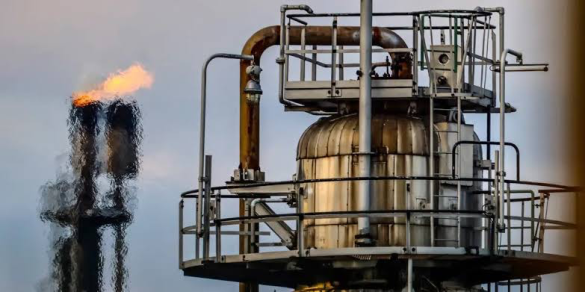The world’s leading oil producer group, OPEC, is taking a firm stance against recent predictions of a declining oil market. In a direct challenge to the International Energy Agency’s (IEA) forecast of peak oil demand by 2029, OPEC maintains that oil consumption will continue to rise for decades to come.
OPEC Bullish on Oil Demand, Projects Continued Growth
OPEC Secretary General Haitham Al Ghais declared on Thursday that the organization’s long-term forecast predicts no peak in oil demand. On the contrary, OPEC expects global oil consumption to reach 116 million barrels per day (bpd) by 2045, with a possibility of exceeding that amount.
This optimistic outlook clashes with the IEA’s report released on Wednesday. The IEA predicts a different future for oil, with demand reaching its peak by 2029 and stagnating around 106 million bpd by the end of the current decade. Al Ghais sharply criticized the IEA’s report, labeling it “dangerous commentary” that could destabilize the oil market.
These comments come against the backdrop of ongoing production cuts implemented by OPEC+. This alliance includes OPEC member countries and non-members like Russia. Since late 2022, OPEC+ has taken significant steps to reduce oil output and support oil prices. Currently, OPEC+ members are collectively cutting production by a substantial 5.86 million bpd, which translates to roughly 5.7% of global oil demand.
The production cuts are divided into two parts: a 3.66 million bpd reduction recently extended for another year until December 2025, and a 2.2 million bpd cut that OPEC+ will gradually phase out over the next year.
OPEC Casts Doubt on IEA’s Predictions
Al Ghais pointed out the inaccuracy of past IEA predictions about peak oil demand. He highlighted instances where the IEA previously suggested gasoline demand peaked in 2019 and coal demand peaked in 2014, only to be proven wrong.
Furthermore, Al Ghais emphasized that OPEC forecasts a rise in oil demand of 4 million bpd over the next two years (2024-2025). This aligns with projections from other forecasting bodies, indicating an increase exceeding 3 million bpd during this period. Even the IEA anticipates a growth of 2 million bpd for the next two years, followed by a modest increase of 0.8 million bpd in 2026. However, the IEA’s forecast takes a sharp turn after 2026, predicting minimal to no growth in the following four years leading to 2030.
“This scenario is unrealistic,” Al Ghais asserted. “It would have negative consequences for economies worldwide. This simply reinforces the IEA’s bias against oil.”
The contrasting forecasts from OPEC and the IEA highlight the ongoing debate about the future of oil. OPEC, representing major oil-producing nations, has a vested interest in a healthy oil market with sustained demand. The IEA, on the other hand, focuses on promoting energy transition and reducing reliance on fossil fuels.
Only time will tell which organization’s prediction will be more accurate. Technological advancements, the pace of global economic growth, and government policies on renewable energy will all play a role in shaping the future of oil demand. In the meantime, OPEC+ is sticking to its production cut strategy and maintaining its optimistic outlook on oil’s future.
Source: Reuters



